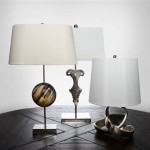Understanding Interior Design Floor Plan Drawings
Interior design floor plan drawings form the bedrock of any successful interior design project. They are visual representations of a space, viewed from above, depicting the arrangement of rooms, walls, doors, windows, furniture, and other architectural elements. These drawings serve as a communication tool between designers, clients, contractors, and other stakeholders, ensuring everyone is on the same page regarding the design's scope and execution.
Floor plans are not merely static blueprints. They are dynamic documents that evolve through the design process. Initial sketches are translated into detailed digital drawings, often utilizing specialized software. These drawings undergo revisions based on client feedback, feasibility studies, and building code regulations. The iterative nature of floor plan development ensures the final design is both aesthetically pleasing and functionally sound.
The accuracy and clarity of a floor plan are paramount. A well-executed drawing minimizes misunderstandings, reduces construction errors, and ultimately saves time and money. A poorly drawn or ambiguous floor plan can lead to costly rework, project delays, and client dissatisfaction. Therefore, understanding the conventions, symbols, and techniques used in creating floor plans is essential for anyone involved in the interior design or construction industry.
Key Elements of a Floor Plan Drawing
Several essential elements contribute to a comprehensive and informative floor plan drawing. These elements communicate vital information about the space and its components.
Walls: Walls are represented by solid, thick lines. Interior walls are often drawn thinner than exterior walls to differentiate load-bearing structures. The type of wall (e.g., drywall, concrete block) may be indicated through hatching or specific line weights. Dimensions showing the wall thickness and the distance between walls are crucial for accurate construction.
Doors and Windows: Doors are depicted as an arc swinging from the hinge point, indicating the direction of the door's swing. The width of the door opening is clearly labeled. Windows are generally represented by parallel lines with a space in between, indicating the glass pane. The size and type of window (e.g., casement, sliding) are typically noted.
Furniture and Fixtures: Floor plans include representations of furniture, appliances, plumbing fixtures, and other essential elements. These are drawn to scale and placed in their intended locations. Standard symbols are used for common items like beds, sofas, toilets, and sinks, ensuring consistency across different drawings. The dimensions of these objects are also considered to ensure adequate circulation space.
Dimensions: Accurate dimensions are critical for construction. Floor plans include overall dimensions of the space, as well as dimensions for individual rooms, walls, and openings. These dimensions are typically expressed in feet and inches, or in metric units, depending on the project's location and building code requirements.
Annotations and Labels: Annotations and labels provide additional information about the space and its components. Room names, material specifications, electrical outlet locations, and plumbing fixture details are all conveyed through annotations. These notes clarify the intent of the design and provide contractors with the necessary information to execute the project correctly.
Scale: The scale of the drawing indicates the relationship between the drawing size and the actual size of the space. Common scales for residential floor plans include 1/4 inch = 1 foot and 1/8 inch = 1 foot. The scale ensures that all elements are drawn proportionally and that accurate measurements can be taken from the drawing.
Types of Floor Plans Used in Interior Design
Different types of floor plans serve specific purposes in the interior design process. Understanding these variations is important for selecting the appropriate drawing for a given task.
Conceptual Floor Plans: Conceptual floor plans, sometimes referred to as bubble diagrams, are preliminary sketches that illustrate the general layout and relationships between spaces. These diagrams are often hand-drawn and focus on the flow of movement and the functional organization of the space. They are used in the early stages of design to explore different layout options.
Presentation Floor Plans: Presentation floor plans are visually appealing drawings used to communicate the design concept to clients. These plans are often rendered in color and include details such as furniture finishes, flooring materials, and lighting fixtures. They are designed to showcase the aesthetic qualities of the design and help clients visualize the final product.
Construction Floor Plans: Construction floor plans, also known as working drawings, are detailed technical drawings used by contractors for building and construction. These plans include precise dimensions, material specifications, and construction details. They provide all the necessary information for building the space according to the design specifications. These drawings are essential for obtaining building permits and ensuring code compliance.
Reflected Ceiling Plans: Reflected ceiling plans (RCPs) are specialized floor plans that show the layout of the ceiling, including lighting fixtures, ceiling fans, and other ceiling-mounted elements. These plans are essential for electrical and lighting design and ensure the proper placement of fixtures for optimal illumination.
Furniture Plans: Furniture plans focus specifically on the placement of furniture within the space. These plans indicate the size, type, and location of each piece of furniture, ensuring that the space is functional and aesthetically pleasing. These plans also consider circulation patterns and clearances to ensure comfortable movement throughout the space.
Utilizing Software for Creating Floor Plan Drawings
Modern interior design relies heavily on computer-aided design (CAD) software for creating floor plan drawings. These software programs offer a range of tools and features that streamline the design process and improve accuracy.
2D CAD Software: 2D CAD software allows designers to create precise and detailed floor plans using lines, arcs, and other geometric shapes. These programs offer tools for dimensioning, annotating, and layering, making it easier to manage complex drawings. Popular 2D CAD programs include AutoCAD LT and DraftSight.
3D Modeling Software: 3D modeling software allows designers to create three-dimensional representations of the space, providing a more realistic visualization of the design. These programs offer tools for creating walls, doors, windows, and furniture in 3D, allowing designers to explore different design options and create photorealistic renderings. Popular 3D modeling programs include SketchUp, Revit, and 3ds Max.
Building Information Modeling (BIM) Software: BIM software is a more advanced type of 3D modeling software that incorporates information about the building's components, such as materials, costs, and performance data. BIM software allows designers to create a comprehensive digital model of the building, which can be used for construction, operation, and maintenance. Revit is a widely used BIM software in the architecture and interior design industries.
Online Floor Plan Tools: Several online floor plan tools are available for creating simple floor plans quickly and easily. These tools typically offer a user-friendly interface and a library of pre-designed furniture and fixtures. While not as powerful as CAD software, online floor plan tools are useful for creating initial sketches and exploring different layout options. Examples include Floorplanner and RoomSketcher.
The choice of software depends on the complexity of the project, the designer's skill level, and the budget. While 2D CAD software is suitable for basic floor plans, 3D modeling and BIM software offer more advanced capabilities for creating complex and detailed designs.
Regardless of the software used, a fundamental understanding of interior design principles and building codes is essential for creating accurate and functional floor plan drawings. These drawings serve as the foundation for successful interior design projects, ensuring that the design is both aesthetically pleasing and practically feasible.
Continual learning and adaptation to new technologies are crucial for interior designers to remain competitive in the ever-evolving field. Mastering floor plan drawing techniques, whether through traditional methods or advanced software, equips designers with the necessary skills to create innovative and effective spaces.

Floor Plan Services 5 Drawing Layout Types They Include

What Interior Designers Do Floor Plans Seabaugh Interiors

Interior Design Ideas Architecture Drawing Plan Drawings

Create Professional Interior Design Drawings

Interior Design Drawings Types Of Floor Plan Layouts Bluentcad

Floor Plan Services 5 Drawing Layout Types They Include

Floor Plans Types Symbols Examples

Floor Plans Types Symbols Examples

Interior Design Floor Plan Before After Reed

Rendered Floor Plan Vector Ilration Home House Architectural Drawing Interior Design Stock Adobe








